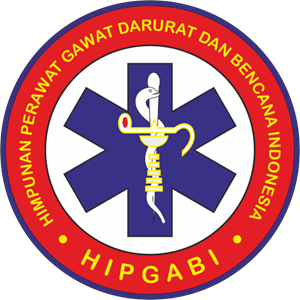EFFECTIVENESS OF SLOW BREATHING TRAINING ON DECREASING BLOOD PRESSURE IN PATIENT WITH HYPERTENSION: A SYSTEMATIC REVIEW
Downloads
Background: Hypertension is recognized as a major health problem throughout the world leading to various life-threatening heart diseases. The higher the level of blood pressure in the long run, the more likely there is a complication of hypertension. Slow breathing exercises are one of the non-pharmacological therapies that can be used to control or reduce blood pressure and strengthening breathing muscles. This systematic review is to analyze the effectiveness of slow breathing training in blood pressure in patients with hypertension.
Methods: Literature search is through Scopus, Pubmed, Proquest, Science Direct, and EBSCO. with the last 5 years (2014-2019). Criteria for inclusion in this review are as follows: studies involving hypertension, ages 18 years and over, patients who have received or are still receiving slow breathing exercises. Keyword in this review was Slow Breathing, Blood Pressure, and Hypertension.
Results: There are 10 journals chosen. Total respondents in this review were 1757 hypertensive patients who received slow respiratory therapy. Slow breathing training provides many benefits for hypertensive patients. Subjects with hypertension, pre-hypertension, and antihypertensive drugs, were given slow breathing intervention that is inhaling as much as ≤10 breaths/minute carried out for ≥5 minutes. This exercise is carried out at ≥3 days/week; total duration of intervention ≥4 weeks; Slow breathing training reduces blood pressure at rest, the average using this slow breathing exercise, blood pressure drops 10 -15 mmHg in systole and diastole. Overall, slow breathing exercises decreased SBP by -5.62 mmHg [-7.86, -3.38] and DBP by -2.97 mmHg [-4.28, -1.66].
Conclusion: Slow breathing training provides many benefits for hypertensive patients. Especially for patients with isolated systolic hypertension. This non-pharmacological therapy can be carried out by individuals independently in controlling the breathing rate so that they can reach breathing speed both during inspiration and expiration. Slow breathing exercises can also help increase baroreflex sensitivity, then affect blood pressure reduction.
A. Chaddha, D. Modaff, C. Hooper-Lane, and D. A. Feldstein, "Device and non-device-guided slow breathing to reduce blood pressure: A systematic review and meta-analysis,” Complement. Ther. Med., vol. 45, no. February, pp. 179–184, 2019.
B. Sangthong, C. Ubolsakka-Jones, O. Pachirat, and D. A. Jones, "Breathing Training for Older Patients with Controlled Isolated Systolic Hypertension,” Med. Sci. Sports Exerc., vol. 48, no. 9, pp. 1641–1647, 2016.
C. Li, Q. Chang, J. Zhang, and W. Chai, "Effects of slow breathing rate on heart rate variability and arterial baroreflex sensitivity in essential hypertension,” Med. (United States), vol. 97, no. 18, p. 5273, 2018.
C. U. Jones, B. Sangthong, O. Pachirat, and D. A. Jones, "Slow breathing training reduces resting blood pressure and the pressure responses to exercise,” Physiol. Res., vol. 64, no. 5, pp. 673–682, 2015.
C. Ublosakka-Jones, P. Tongdee, O. Pachirat, and D. A. Jones, "Slow loaded breathing training improves blood pressure, lung capacity and arm exercise endurance for older people with treated and stable isolated systolic hypertension,” Exp. Gerontol., vol. 108, no. March, pp. 48–53, 2018.
C. Ubolsakka-Jones, P. Tongdee, and D. A. Jones, "The effects of slow loaded breathing training on exercise blood pressure in isolated systolic hypertension,” Physiother. Res. Int., vol. 24, no. 4, pp. 1–10, 2019.
D. Fatima, H. Vinay, and N. V Muninarayanappa, "Effectiveness of Deep Breathing Exercise ( Dbe ) on the Heart Rate Variability , Bp , Anxiety & Depression of,” Nitte Univ. J. Heal. Sci., vol. 4, no. 1, pp. 35–41, 2014.
G. S. Naik, G. S. Gaur, and G. K. Pal, "Effect of Modified Slow Breathing Exercise on Perceived Stress and Basal Cardiovascular Parameters.,” Int. J. Yoga, vol. 11, no. 1, pp. 53–58, 2018.
M. Sriloy, P. M. K. Nair, K. Pranav, and D. Sathyanath, "Immediate effect of manual acupuncture stimulation of four points versus slow breathing in declination of blood pressure in primary hypertension”A parallel randomized control trial,” Acupunct. Relat. Ther., vol. 3, no. 2–3, pp. 15–18, 2015.
Y. Zou et al., "Meta-Analysis of Effects of Voluntary Slow Breathing Exercises for Control of Heart Rate and Blood Pressure in Patients With Cardiovascular Diseases,” Am. J. Cardiol., vol. 120, no. 1, pp. 148–153, 2017.
Copyright (c) 2020 Rischar Beni Riswanto, CH.R Yeni Suryandari, Nur Hidayatin

This work is licensed under a Creative Commons Attribution 4.0 International License.
1. The journal allows the author to hold the copyright of the article without restrictions.
2. The journal allows the author(s) to retain publishing rights without restrictions.
3. The legal formal aspect of journal publication accessibility refers to Creative Commons Attribution (CC BY).

















